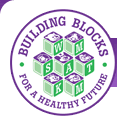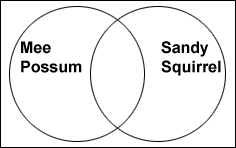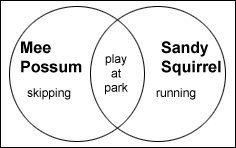
| Brought to you by the US Department of Health and Human Services, Substance Abuse & Mental health Services Administration |
 |
Home  About Us About Us  Links Links  Get E-mail Updates Get E-mail Updates  Awards Awards |
 |
|||
|
|
|||||
| Send this page to a friend | Print this page |  |
||||
|
|
 |
 
Circle of FriendsThe school setting presents a perfect opportunity to observe children’s social development and to help children learn to make new friends. PurposeTo guide children to build positive relationships with others and broaden their circle of friends. Materials
This activity was adapted from “Connections,” (PDF), In the Aftermath: Lesson Plan 11 from the American Red Cross Masters of Disaster program. Preparation
Write students’ answers on five separate 3”x5” cards. Then, have the students write their names on the sixth card. Keep the stacks of cards. Note: With older students, you may ask these questions outloud to the group and have them write their own answers on each of the cards.  Continue until you have several words or phrases in each section of the circles. Ask: Can people be different and still be friends? Next, tell the students they are going to see how they are alike or different from friends in the classroom. Give the students their six completed 3”x5” index cards and 36” circle of string. Divide the class into teams of two. Sitting on the floor, have each pair of students make intersecting circles with their yarn and place their name cards in their own circles. Now, have them go through the other cards to see how they are different and how they are alike. For example, if one student’s favorite color is blue and the other’s is red, then these two cards will be placed in the separate parts of the circles. If both students like to play baseball, then these cards will be stacked together and placed in the connecting part of the circle. After all the cards are placed, have the student teams share their likes and differences. After each team finishes, have the class say together: “And, you can still be friends.” For older students: Use a three-part Venn Diagram. In the example below, Section 1 will show how Sandy Squirrel and Mee Possum are alike; Section 2 illustrates how Wally Bear and Mee Possum are alike; Section 3 illustrates likenesses between Wally Bear and Sandy Squirrel; and Section 4 shows how all of the friends are alike. ProcedureAsk the students to talk about “friendship” and what it means. They might describe a friend or tell why others are their friends. Ask: Are friends always the same? Can friends like different things? After class discussion, introduce the Building Blocks Friends through the selected book pages. Have the students find things that are alike about each friend and things that are different. For example, Mee Possum likes to skip. Write “skipping” in the part of the circle where Mee Possum’s name appears. Sandy Squirrel likes to run. Write “running” in the part of the circle where Sandy’s name appears. They both like to play in the park. Write that in the center area where the circles intersect or connect.  Continue until you have several words or phrases in each section of the circles. Ask: Can people be different and still be friends? Next, tell the students they are going to see how they are alike or different from friends in the classroom. Give the students their six completed 3”x5” index cards and 36” circle of string. Divide the class into teams of two. Sitting on the floor, have each pair of students make intersecting circles with their yarn and place their name cards in their own circles. Now, have them go through the other cards to see how they are different and how they are alike. For example, if one student’s favorite color is blue and the other’s is red, then these two cards will be placed in the separate parts of the circles. If both students like to play baseball, then these cards will be stacked together and placed in the connecting part of the circle. After all the cards are placed, have the student teams share their likes and differences. After each team finishes, have the class say together: “And, you can still be friends.” For older students: Use a three-part Venn Diagram. In the example below, Section 1 will show how Sandy Squirrel and Mee Possum are alike; Section 2 illustrates how Wally Bear and Mee Possum are alike; Section 3 illustrates likenesses between Wally Bear and Sandy Squirrel; and Section 4 shows how all of the friends are alike.  For example, Section 4 might say “play in the park”; Section 1 might say “girls.” When the class has completed talking about three Building Blocks Friends, divide the class into teams of three to make and discuss three-friend Venn Diagrams. DiscussHave the students talk about their circles of friends. Are differences important when making friends? Who is a new friend you’ve made today? Related Family Article: Helping Lonely Children To Make Friends Resources:
|
|||||
| Site Map | Contact Us | FAQ | Ask SAMHSA | Privacy Policy | Web Site Policies | FOIA | USA.gov | Plain Language |
|
Updated on 3/21/2012 |